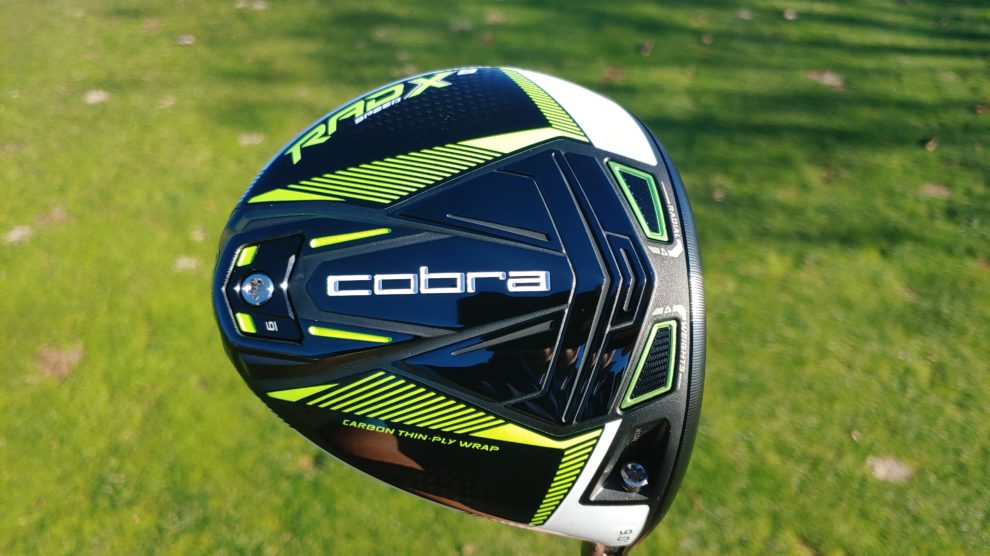There are trade-offs in making a driver. Every decision a designer makes has an impact on the overall performance of the club.
With last year's King Speedzone line, Cobra Golf prioritized hiking moment of intertia while driving the center of gravity lower-and-backer on the club head to deliver higher launch conditions and lots of forgiveness. The ball speed increases, as the name implied, was from an improved head frame, better use of carbon fiber paneling and a CNC-milled face that was hotter and more consistent.
However, one of the trade-offs of that design was a modest increase in spin. It wasn't something that a properly fit shaft couldn't fix, but when competing for a consumer's attention, getting it right without going to a second, third or fourth shaft is very much a desired goal.
That's why the Cobra team wanted to find a way in their new driver to balance speed, forgiveness and spin. They wanted the ball to fly far, run a long way and go straight. They wanted it all.
They believe they have that in Radspeed.
The speed part of the name is obvious. The rad part of the name isn't really an effort to bring back the '80s, as awesome as they were. Rather, the rad part of the name is about the radius of gyration, which is a physics term explaining the distance between an object's center of gravity and other weight points.
Now, what does that have to do with a driver?
It has everything to do with managing forgiveness by moving the center of gravity low and back with killing spin by pushing weight forward, toward the hitting zone. The radius of gyration is the maximum distance weight can be from that center of gravity in a cylindrical object and still have a net-positive effect on performance. It's a more complicated view of the term "perimeter weighting."
In the Radspeed lineup, there are three models -- Radspeed, Radspeed xB and Radspeed xD -- that all use this concept to appeal to certain types of golfers.
All three drivers share some common design elements that help make bigger radii of gyration possible.
The T-bar chassis (cage, shell, etc.) is back, a follow-on from SpeedZone. The chassis is the base of the driver, made of titanium and 7 grams lighter than the last driver. The chassis is wrapped in carbon fiber to create weight savings that can be placed elsewhere. The Radspeed wrap saves 6 more grams compared to Speedzone.
The CNC-milled Infinity face returns from Speedzone, too. The face is CNC milled as the company believes it creates a more consistent face from club to club and can be used to maximize performance by stripping away weight in the right places to generate higher ball speeds throughout the hitting zone. Also, a CNC milling machine is better at preserving the slanted bulge-and-roll radii as designed by the Cobra team. In other words, the process helps insure you get the club as designed.
The weight saved with these two features has been moved low on the head, just behind the face, while still counterbalancing some weight in the back of the clubface where the sole and crown meet. Depending on the model, this forward weight achieves different goals.
Radspeed
The Radspeed model is what would in other years have been considered the Plus model -- in other words, the model for better golfers. The Radspeed has two weight ports, one back and one forward, to dial in center of gravity depending on the needs of the player. More weight forward helps kill spin and lowers launch, while more weight back helps hike launch conditions and improves MOI slightly. The default weights are 12 grams and 2 grams. The front weight -- radial weights, as they're called -- are 8 grams each and placed just left and right of center of the club. These are spin killers, taking some 300 rpm off from the SpeedZone.
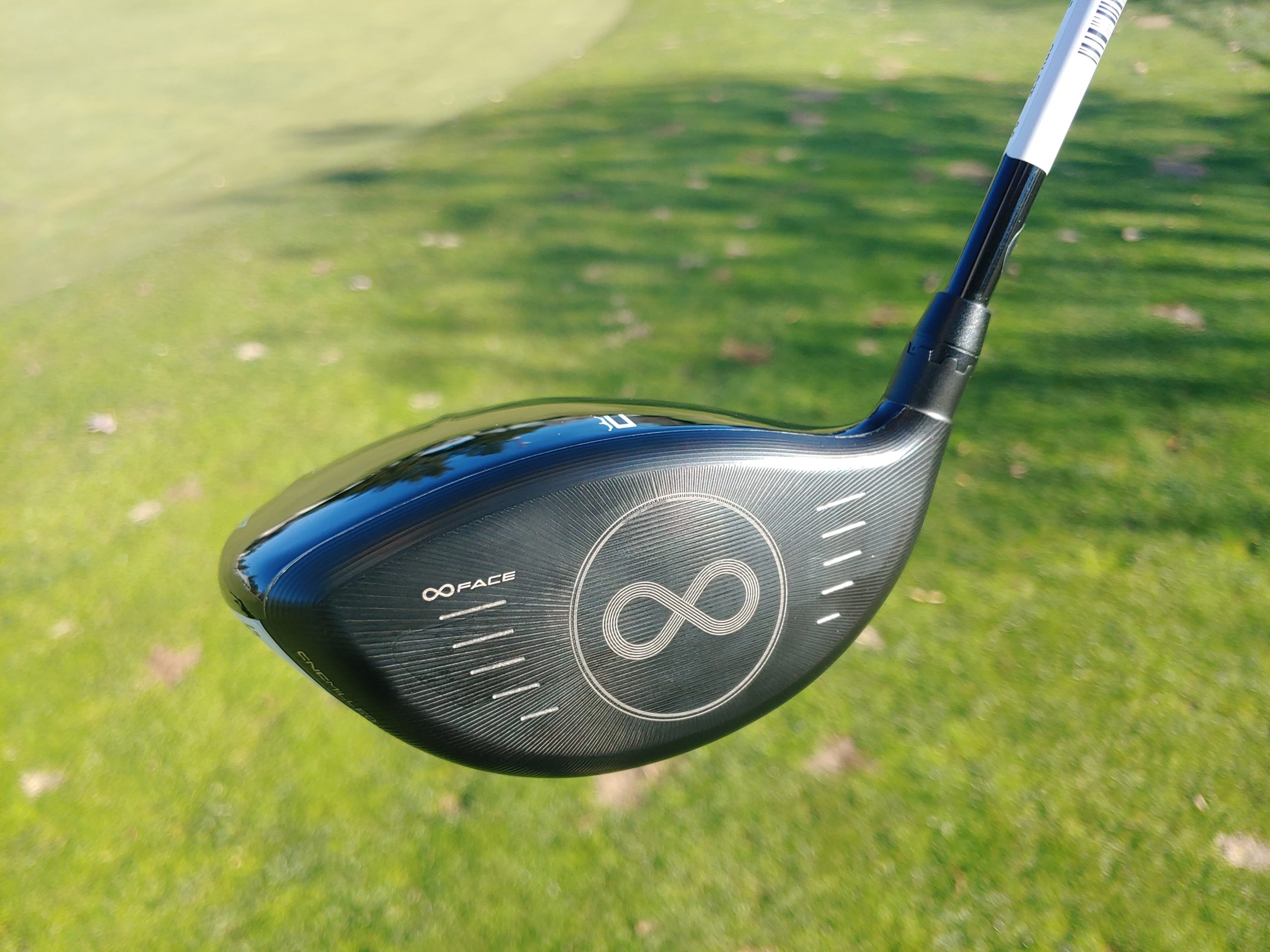

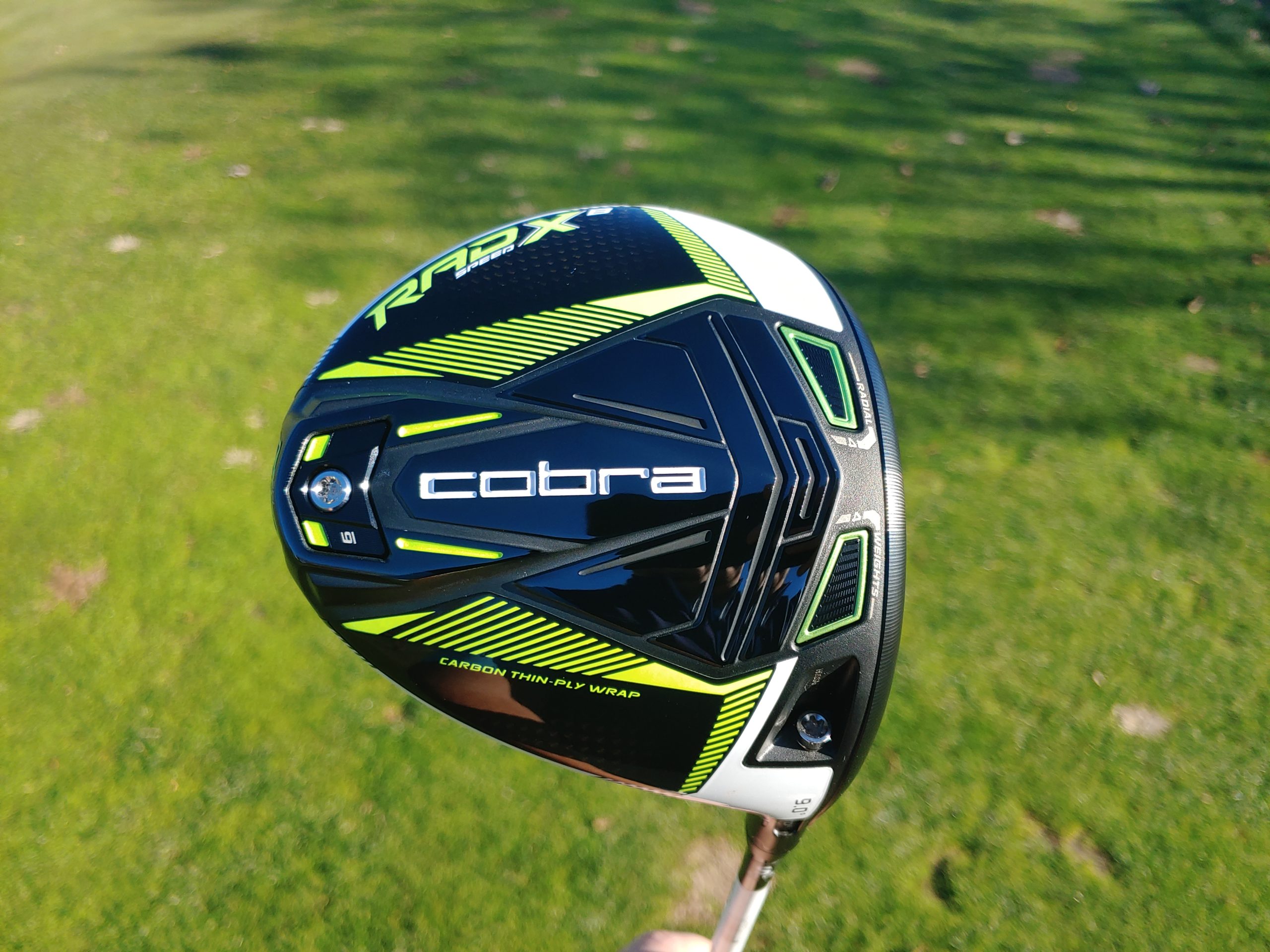
Radspeed xB
The Radspeed xB is the successor to the SpeedZone Xtreme, which is probably Cobra's most forgiving driver in recent memory. With the xB, they're looking to offer comparable MOI to the Xtreme while moving the center of gravity lower and using radii of gyration. The weighting system is different with the xB, going with two four-gram weights in the front pads, a six-gram weight in the back slot (no front slot) and a 20-gram weight pad in the back of the clubhead. The idea here is to offer something that kills spin while still offering forgiveness. The trade is modestly less spin for more yards, giving up a little on the MOI side.
The length of the xB is also a talking point. The xB is 46 inches long, while the Radspeed OG is 45.5 inches. More length can mean more distance, but it can also be harder to control. Both models are available in a Tour length of 44.5 inches for players who hit it plenty far and want some more control.
The xB is available in 9-, 10.5- and 12-degree heads, with women's options in the 10- and 12-degree models.
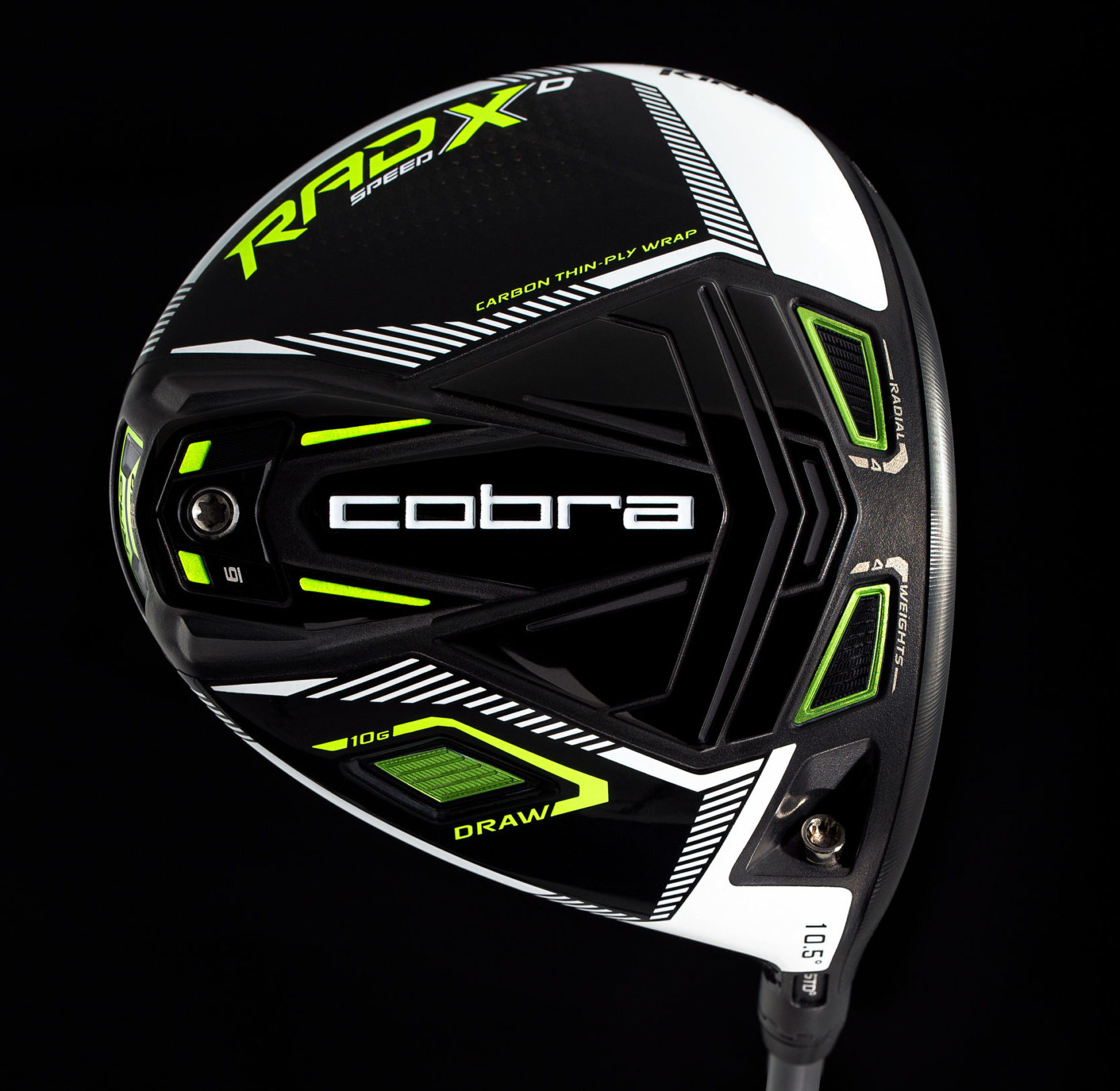
Radspeed xD
The D in xD is for draw. This is the draw-biased model of the three Radspeed heads. These models have permeated through the golf world as a way of getting struggling golfers a premium option, rather than just throwing them some clunky thing that doesn't fit the modern lineup.
With the xD, the basis is the xB (B for back?), with two four-gram radial weight pads in the front. In the back weight, it's 8 grams, instead of 20. There's a 6-gram CG weight. Where does the remainder of the xB's weight go? Into a 10-gram weight pad located in the heel section of the head, moving the CG to promote a draw bias.
Again, there's a trade-off that Cobra looked to address here. Moving weight to the heel moves the center of gravity forward, meaning MOI dips. That means the ball has a propsenity to go left at the risk of the head not being as forgiving in the hitting zone. However, Cobra believes they've compromised little on MOI compared to the gain with the heel weight.
The xD also has a 46-inch shaft and is available in 10.5- and 12-degree heads.
There's a suit of four stock shaft options available, Project X EvenFlow Riptide Blue, Project X HZRDUS Smoke RDX, Fujikura Motore F1 and Fujikura Motore F3. The choices vary based on driver model, shaft flex and loft.
The Radspeed driver is available in two colorways. The lead is the Turbo Yellow/black combo that has some neon vibs and white accents. The black is matte-style in the Radspeed and glossy in the Radspeed xB and xD. There's also the Matte Peacoat/Arsenal Red that's got some American flag style to it and looks nice.
The drivers are available for pre-order on Jan. 15, 2021, with retail stores getting them on Jan. 29, with a price of $449.
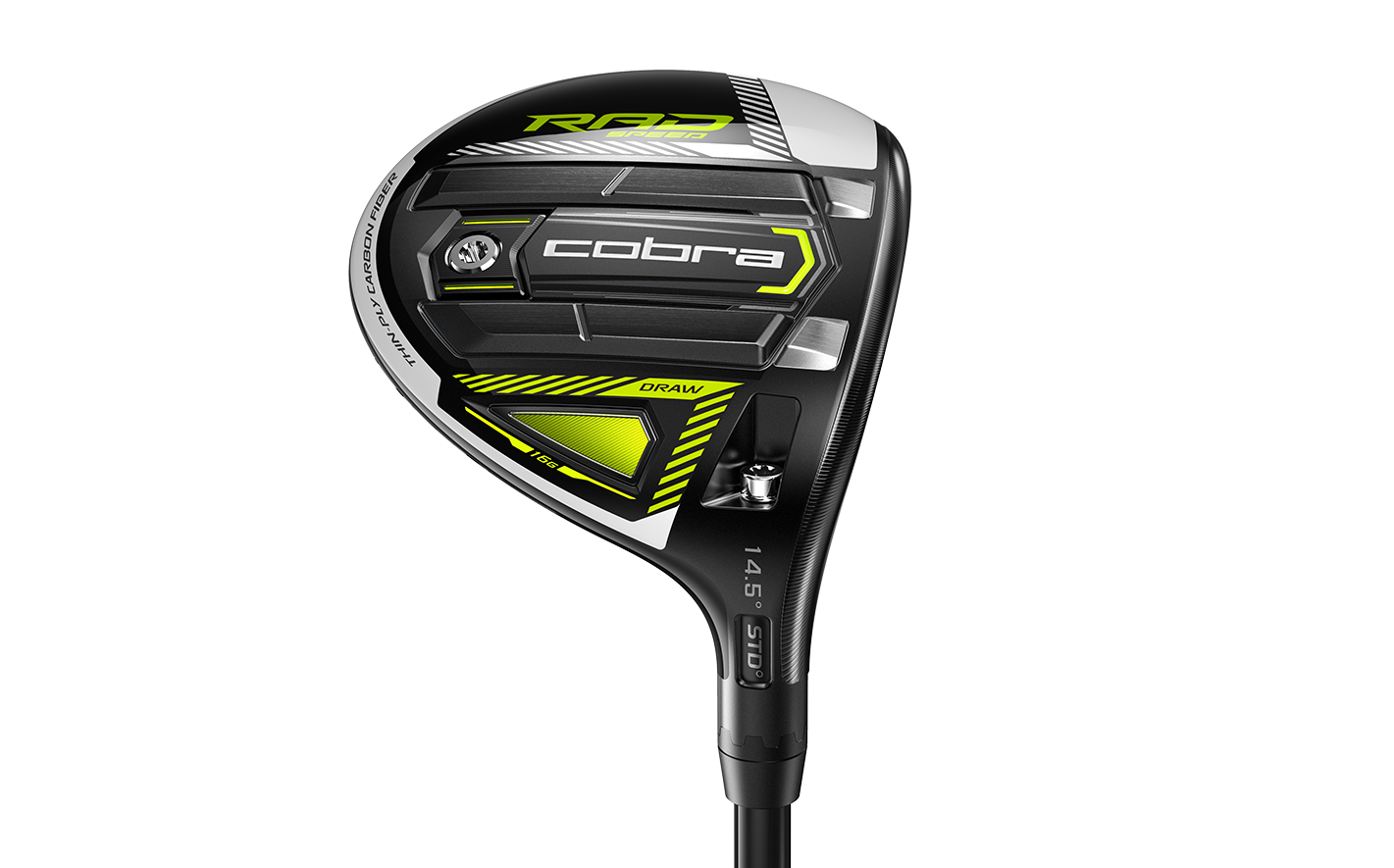
Radspeed fairway woods
The Radspeed fairway wood family is actually bigger than the driver family, with four different options available: Radspeed, Radspeed Draw, Radspeed Tour, Radspeed Big Tour. Really, though, most golfers are going to fit into one of two options, with a pair of options (Tour and Big Tour) geared toward better players.
The Radspeed fairway wood uses the same radii of gyration concept as the driver. They also use, for the first time, a CNC-milled Infinity face. This one is high-strength steel instead of titanium, but the same benefits still apply. The Tour and Big Tour don't have the Infinity face in this release.
The big design features in the Cobra fairway wood and hybrid families is rails. They help get the club through any lie, and they've been hollowed out over the years to give discretionary weight to position without diminishing their benefit as a feature. In fact, the hollow rails, Cobra says, helps the face to flex more and offer higher ball speeds across the hitting zone. The Big Tour doesn't have the same hollow-rail design as the other three models.

All those weight savings are placed elsewhere in the head, with the position depending on the model. For the Tour and Big Tour models, the weight is positioned forward, toward the hitting zone to kill spin and increase ball speed. The Big Tour, which is literally a bigger head with a deeper top-to-bottom profile, launches higher compared to the Tour, with the same low spin. In Radspeed, there are two eight-gram weight pads toward the front of the clubhead with a 7-gram weight in the back. In Radspeed Draw, the whole 23-gram lot is positioned in the heel to create the first draw-biased fairway wood in Cobra's flagship lineup.
Three stock shaft are options available, Project X EvenFlow Riptide Blue, Fujikura Motore F1 and Fujikura Motore F3. The choices vary based on driver model, shaft flex and loft.
The Radspeed fairway woods are available in both driver colorways in 14.5-, 18.5- and 22.5-degree heads. The Tour and Big Tour are available in 14- and 17.5-degree heads, just in the yellow-black colorway. The Radspeed Draw is available in 14.5-, 18.5- and 22.5-degree heads.
The fairway woods are available for pre-order on Jan. 15, 2021, with retail stores getting them on Jan. 29, with a price of $279 each.
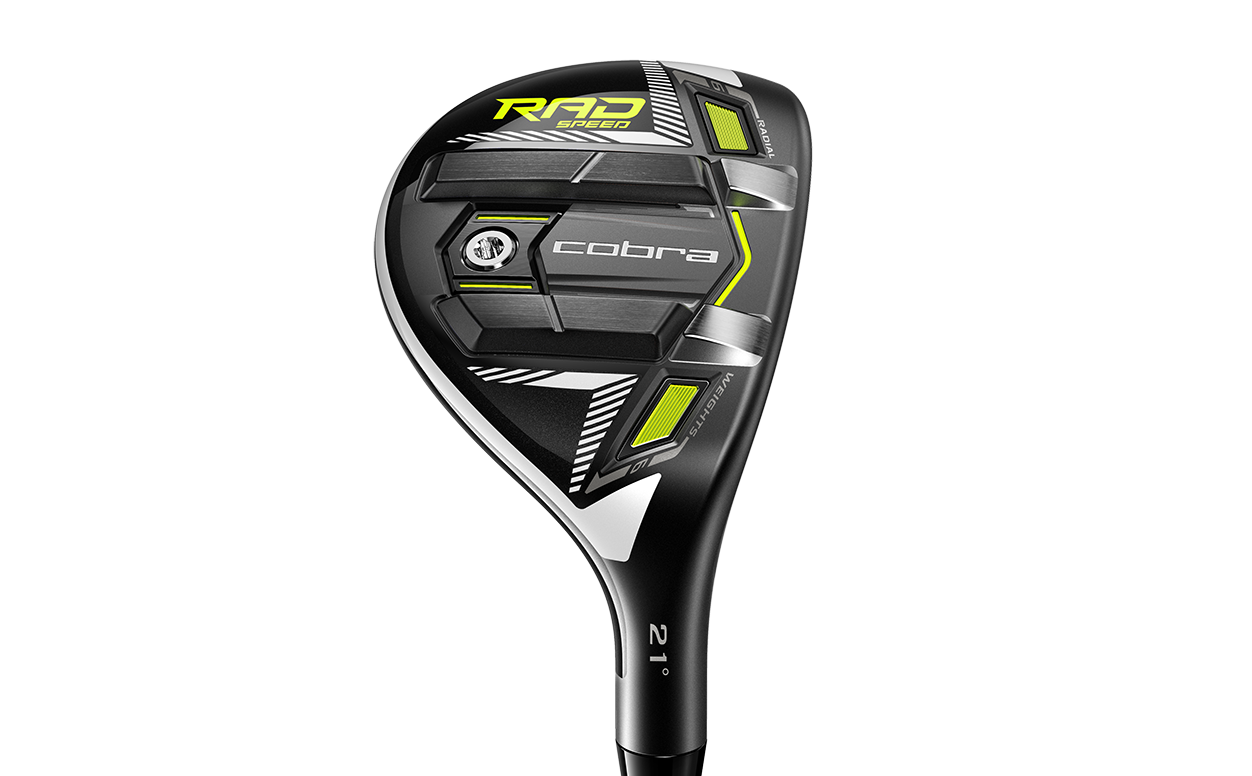
Radspeed hybrids
The Radspeed hybrids are perhaps geared toward a better player without alienating higher-handicap players. The idea is to have a low (but not as back) center of gravity and a low-spin launch profile to promote distance. So, yeah, the distance helps any golfer, much less a better golfer.
The Radspeed hybrids aren't as diverse as the driver and fairway wood cousins, and they don't have the Infinity face but rather a face insert. The hollow rails, however, are a part of the hybrids, which come in traditional-length and One-length models.
There are four available heads, in 17-, 19-, 21-, and 24-degree lofts in both lengths.
The fairway woods are available for pre-order on Jan. 15, 2021, with retail stores getting them on Jan. 29, with a price of $229 each.

